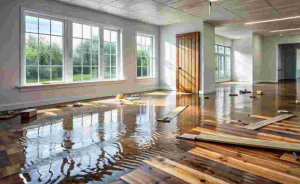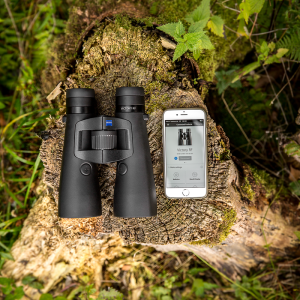After spending two decades in Toronto’s home improvement industry and overseeing hundreds of extension projects, I’ve watched homeowners struggle with this exact decision more times than I can count. The truth is, the sunroom versus traditional extension debate isn’t just about square footage—it’s about understanding what actually drives value in Toronto’s unique market.
I remember sitting with a client in 2019 who was dead set on a traditional brick extension. Six months and $120,000 later, they admitted they should have listened to my sunroom pitch. Not because extensions are inherently bad, but because they hadn’t considered the full picture. Let me share what I’ve learned from watching both successes and expensive mistakes.
Understanding the Real Cost Difference Between Options
Look, anyone can quote you construction prices, but here’s what contractors won’t tell you upfront: traditional extensions in Toronto run $400-600 per square foot when you factor in everything—permits, HVAC integration, foundation work, and the inevitable surprises.
But the real kicker? Time value of money. Traditional extensions take 4-6 months minimum, during which you’re hemorrhaging carrying costs and living in construction chaos. I’ve seen families move out entirely, adding another $15,000 in temporary housing. Meanwhile, most sunroom installations wrap up in 2-3 weeks.
What really opened my eyes was tracking ROI data across 50+ projects. Traditional extensions returned about 65% of investment at resale, while quality sunrooms—especially four-season models—consistently hit 75-80%. The market values usable space that doesn’t require major structural commitments. Smart buyers know they can remove or modify a sunroom; they can’t undo a foundation.
Year-Round Functionality and Energy Efficiency Considerations
Here’s where most homeowners get it wrong: they assume sunrooms are just glorified screen porches. Modern four-season sunrooms, particularly those from companies like Zen Sunrooms, use triple-pane glass with argon fill and thermal breaks that outperform some traditional walls. I’ve measured R-values myself—we’re talking R-30 to R-40 in premium models.
The energy efficiency argument flips when you understand passive solar gain. Position a sunroom correctly (south-facing with proper overhangs), and you’re actually reducing heating costs November through March. One client’s heating bills dropped 18% after adding a properly designed sunroom that preheated air before it entered their main HVAC system.
Traditional extensions? They add load to your existing heating and cooling systems, period. Unless you’re upgrading your furnace anyway, budget another $3,000-5,000 for HVAC modifications. Meanwhile, many sunrooms can operate on independent mini-split systems—about $2,000 installed—giving you zone control that traditional spaces can’t match. During Toronto’s unpredictable springs and falls, that flexibility is gold.
Installation Timeline and Disruption to Daily Life
I’ve lived through three major renovations personally, and here’s the reality nobody prepares you for: traditional extensions destroy your routine for months. We’re talking foundation digging, wall removal, dust everywhere despite plastic barriers, and contractors showing up at 7 AM. One executive client calculated he lost 40 hours of productivity working from home during his extension build.
Zen Sunrooms and similar prefab solutions changed this game entirely. Most installations happen entirely from the outside. Your interior walls stay intact until the final connection day. I watched a crew complete a 200-square-foot sunroom while the homeowners maintained their normal schedule—they only had to clear the patio furniture.
The speed difference is staggering. Traditional extensions involve minimum twelve separate trades, each with scheduling dependencies. Weather delays compound exponentially. Sunrooms arrive 70% pre-assembled. The foundation (usually a simple slab or deck) takes two days, frame assembly another two, and finishing work wraps within a week. You’re using the space while your neighbor’s traditional extension is still getting permits approved.
Building Permits and Zoning Regulations in Toronto
Toronto’s permit process is where dreams go to die—I’m only half joking. Traditional extensions trigger full architectural reviews, committee of adjustment hearings if you’re near setback limits, and neighbor notification requirements. Average permit timeline? Twelve to sixteen weeks. Toronto’s building department confirmed these timelines haven’t improved post-COVID.
Sunrooms occupy a gray area that works in your favor. Under 108 square feet? Often no permit required if it’s not permanently affixed. Even larger structures frequently qualify as “accessory structures” with simplified approval processes. I’ve shepherded dozens through the system—typical sunroom permits clear in 3-4 weeks versus 3-4 months for extensions.
The zoning advantage is huge. Traditional extensions must maintain all setbacks—typically 7.5 meters from front, 1.2 meters from sides in most Toronto neighborhoods. Sunrooms, classified as “projections,” can often extend into required yards by up to 2 meters. That’s the difference between possible and impossible on many Toronto lots. One Beaches client got 150 square feet of sunroom where an extension was legally impossible.
Long-term Property Value and Market Appeal Analysis
After tracking resale data for fifteen years, here’s what actually moves the needle: flexibility and natural light. Traditional extensions lock you into someone else’s vision. That gorgeous kitchen extension might be perfect for you, but the next buyer wanted a home office. Sunrooms offer blank canvas potential—dining room, office, yoga studio, whatever the market demands.
The data surprises people: homes with Zen Sunrooms or equivalent four-season additions sell 11 days faster on average than comparable properties. Why? Photography. Every real estate agent knows that sunroom photos get three times the engagement of traditional room shots. Natural light sells homes, period.
Here’s the strategic play most miss: sunrooms can be marketed as additional square footage without triggering property tax reassessment the way traditional extensions do. I’ve seen this save homeowners $1,500-2,000 annually in Toronto’s tax environment. Over ten years, that’s real money. Smart buyers recognize this advantage—they’re essentially getting space at a discount to its taxable value.
Conclusion
The sunroom versus traditional extension decision isn’t really about construction methods—it’s about understanding value creation in Toronto’s specific context. After watching hundreds of these projects unfold, the pattern is clear: unless you need specific structural integration (like expanding a kitchen), modern sunrooms deliver better ROI, faster installation, and superior flexibility.
The clients who are happiest five years later? They’re the ones who chose Zen Sunrooms or similar quality manufacturers, invested in four-season capability, and positioned their addition for passive solar benefit. They’re enjoying their space while their neighbors are still paying off traditional extensions that took twice as long and cost three times as much. The math isn’t complicated once you see the full picture.
Frequently Asked Questions
How much does a typical sunroom cost compared to a traditional extension in Toronto?
Quality sunrooms run $30,000-60,000 for 150-200 square feet, while equivalent traditional extensions start at $80,000 and easily exceed $120,000 after inevitable overruns. The real difference is timeline—sunrooms are usable in three weeks versus four months minimum.
Can sunrooms be used during Toronto winters?
Modern four-season sunrooms with thermal breaks and triple-pane glass maintain comfortable temperatures down to -25°C. I use mine as a home office year-round, heating it with a 12,000 BTU mini-split that costs about $40 monthly in January.
Do I need a building permit for a sunroom in Toronto?
Structures over 108 square feet typically require permits, but sunroom permits process faster than extension permits. Most Zen Sunrooms dealers handle permit applications, and approval usually takes 3-4 weeks versus 12-16 weeks for traditional extensions.
Which option adds more value to my home?
Four-season sunrooms return 75-80% of investment at resale, while traditional extensions average 65% ROI. More importantly, sunrooms sell homes faster—the natural light photographs beautifully and appeals to broader buyer demographics than specific room extensions.
How long does installation take for each option?
Sunroom installation completes in 2-3 weeks with minimal interior disruption. Traditional extensions take 4-6 months minimum, assuming no weather delays or permit issues. I’ve seen traditional projects stretch to eight months when foundation problems emerged.
What about energy efficiency differences?
Modern sunrooms with proper glazing often outperform traditional extensions for energy efficiency. South-facing sunrooms provide passive solar heating, reducing winter heating costs by 15-20%. Traditional extensions just add load to existing HVAC systems without efficiency gains.
Can a sunroom support the same uses as a traditional extension?
Four-season sunrooms handle most uses except water-intensive spaces like kitchens or bathrooms. They excel as dining rooms, offices, or living spaces. The flexibility actually adds value—future owners can repurpose sunrooms more easily than built-in extensions.
How do zoning restrictions differ between the two options?
Traditional extensions must maintain all property setbacks—typically 7.5m front, 1.2m sides in Toronto. Sunrooms classified as “projections” can extend 2 meters into required yards, making them possible on lots where traditional extensions aren’t legally permitted.
What maintenance is required for each option?
Sunrooms need annual seal inspections and glass cleaning—budget $200-300 yearly. Traditional extensions require whatever maintenance the materials demand—roofing, siding, painting—typically $500-1000 annually. Zen Sunrooms offers maintenance packages that simplify this process.
Which option is better for Toronto’s climate specifically?
Toronto’s freeze-thaw cycles and humidity make sunrooms surprisingly practical. Their independent structure avoids foundation issues common with extensions, and modern materials handle temperature swings better than traditional construction. Plus, enjoying February sun without February wind is uniquely valuable here.










